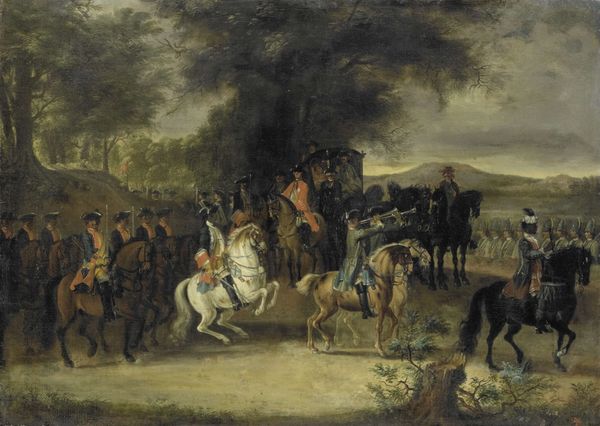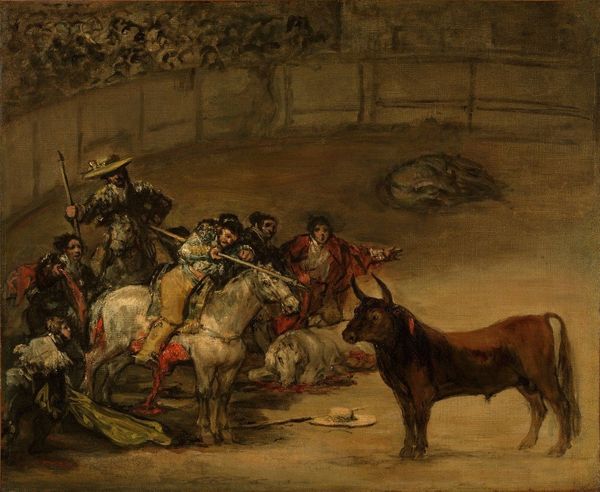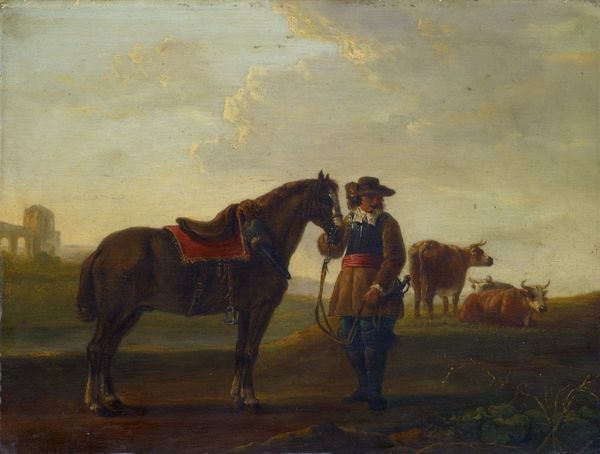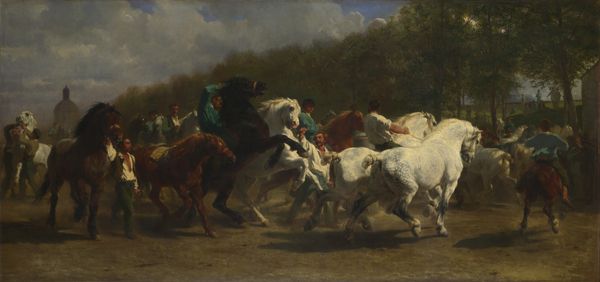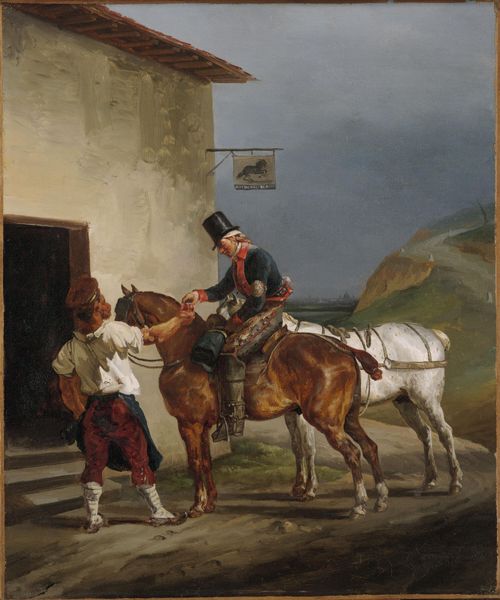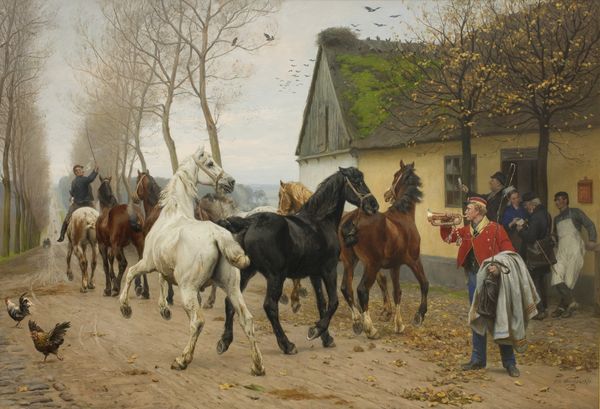
Copyright: Public Domain: Artvee
Editor: This is Rosa Bonheur's "Trotting a Horse," created in 1856 using oil paints. The immediate impression is of raw energy, of a horse bursting forward. I’m curious about the artist's intentions. How do you interpret this work? Curator: It’s crucial to consider Bonheur's position in the 19th century. Animal painting was often relegated to a lower status than, say, history painting. By choosing to depict horses with such dynamism and technical skill in oil paint, she’s implicitly challenging these hierarchies. Think about the labor involved – the physical demands of working on a large canvas, the study of anatomy required for accuracy. Editor: That’s fascinating. I hadn't considered the inherent challenge to artistic hierarchies in her choice of subject matter and medium. So, it’s not just about portraying a horse realistically? Curator: Not at all! Consider the social context. Horses were vital for transportation, agriculture, and warfare. Bonheur isn't just representing an animal, she is representing labour, utility and social fabric. Her meticulous rendering suggests an appreciation, almost a celebration, of their economic and cultural value. The loose brushwork elsewhere may suggest a commentary on the speed and machinery entering the scene and influencing horse power. Editor: The material context brings a completely new level of appreciation for this work, beyond just the aesthetic qualities. I see that this realistic painting style connects directly to the role of horses in that period, both literally and socially. Curator: Precisely! Considering the material and cultural implications transforms how we see not just "Trotting a Horse," but all of Bonheur's work. It offers insight into societal shifts, manual labor, and questions of high versus low art. Editor: It also made me see horses in paintings in a new, almost economic perspective! Thank you!
Comments
No comments
Be the first to comment and join the conversation on the ultimate creative platform.

